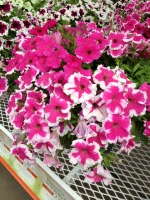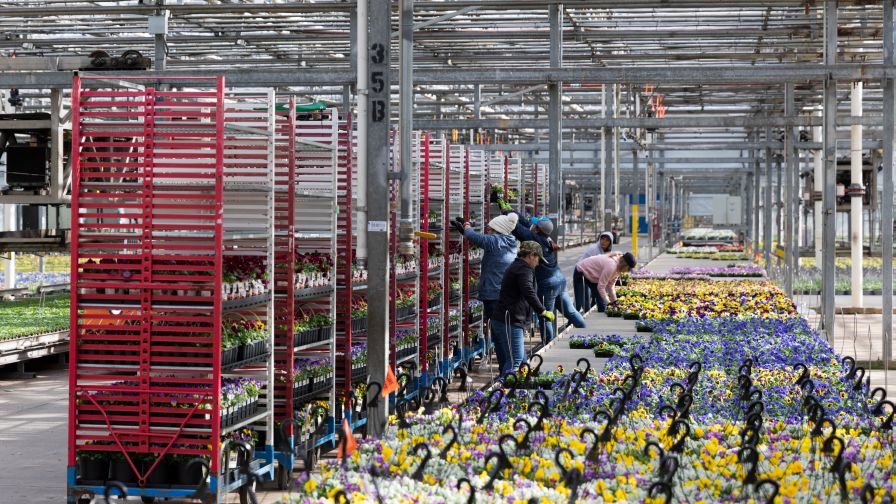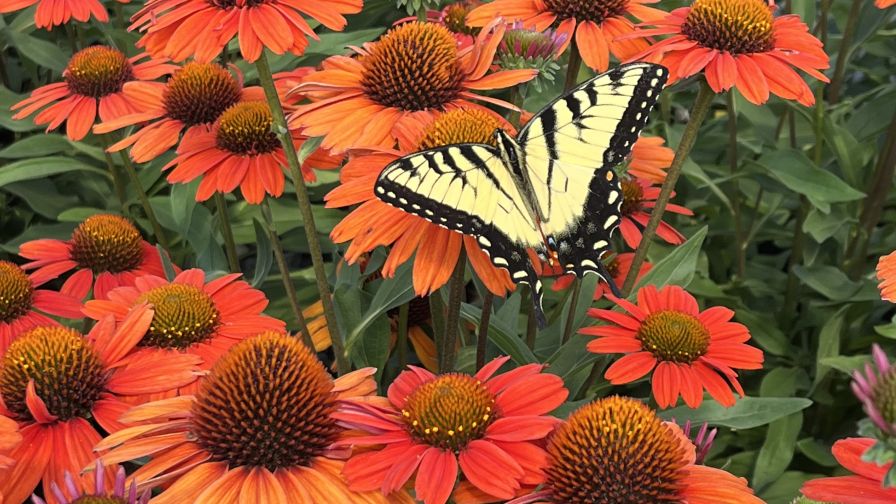California Spring Trials 2013: Weird Petunia Colors

Multiple colors are hot. It’s a theme we’re really noticing this year at just about every California Spring Trials stop. Clean, solid colors are great, but more and more, the breeders seem to be responding to the fact that consumers want a little variety in their blooms.
We heard at Proven Winners that their surveys are showing “bicolor” to be one of the most popular color options for consumers. It’s one of the reasons they’re so enthusiastic about their new Superbells Pomegranate Punch calibrachoa, with its striking deep-red blooms with black centers.
An odd mini-trend we’ve seen this week is an extension of this multiple colors idea, and one most growers might shy away from at first: Varieties with unstable flower colors and patterns.
We saw something like this at Westhoff’s trials last spring, and now we’re seeing it again at Danziger with its ‘Indian Summer’ petunia, Cohen with its Happy petunias, Plant Source International (with some of Westhoff’s Crazytunias), Dümmen with its ‘QueenBee’ and ‘Peppy Cerise’petunia and ‘Raspberry Superstar’ petunia at HGTV. Some appeared more variable than others, but all have pleasingly weird, unevenly colored blooms.
The initial reaction I heard was that “growers won’t like these because the color is unstable – you don’t know exactly what patterns you’re going to get on an individual plant, let alone across an entire bench of these.”
In my mind, though, that may be where the opportunity lies with varieties like this. These aren’t going to take off and outsell pink, white or purple, but they may be quirky and different enough to appeal to newer consumers who aren’t looking for the same stuff their parents planted in front of the house.
Yoav Scholz, a grower for Cohen Propagation Nursery, agreed, and pointed to a variety in Cohen’s Petunia Happy series as an example.
“Five years ago we would have looked at something like this and said, ‘It’s not stable, it looks like there’s something wrong with it,’ and we would have gotten rid of it. Now, however, we think the market may be coming around for something like this,” he says. “This may have real appeal for young people who are looking for something unique.”
This could be a good niche variety – particularly for growers serving the independents, which can create a story around a variety like this and run with it. I think they’re worth a look.









